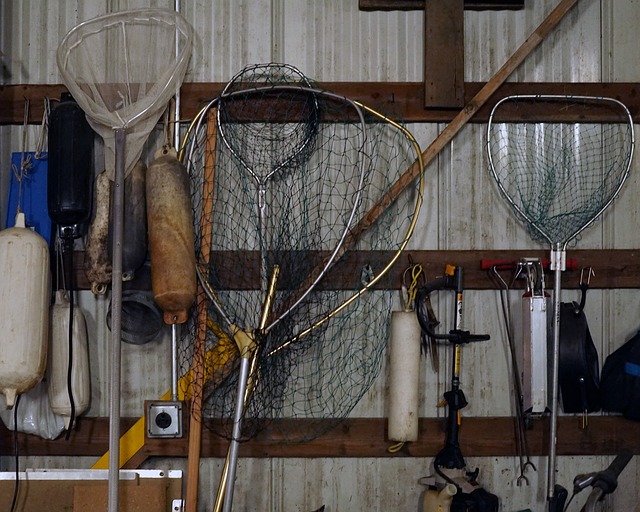Fly fishing is a beloved hobby enjoyed by millions of people worldwide. It’s a sport that requires patience, skill, and the right equipment. One essential piece of equipment that every fly fisher needs is a good quality net. However, if you’ve ever shopped for a fly fishing net, you’ve probably noticed that they can be quite expensive.
Fly fishing nets are expensive due to the high-quality materials used, skilled and time-consuming manufacturing process, added design features, brand reputation, and limited supply and high demand. While the cost may seem steep, investing in a high-quality fly fishing net will provide a durable and functional tool for catching fish and enhance your overall fly fishing experience.
However, in this article, I will explore the reasons behind the high cost of fly fishing nets in detail. I’ll look at the quality of materials used, the manufacturing process, the design and functionality, brand reputation, and supply and demand. By the end of this article, you’ll have a better understanding of why fly fishing nets are so expensive and why they’re worth the investment.
Quality of Materials
One reason that fly fishing nets are so expensive is the high-quality materials used in their construction. Unlike other fishing nets, which are often made of cheaper materials such as nylon or plastic, fly fishing nets are typically made of more expensive materials such as wood, bamboo, and carbon fiber.
These materials offer several advantages. For example, wood and bamboo nets are often prized for their aesthetic appeal and traditional feel. They’re also lightweight, making them easy to handle and maneuver. Carbon fiber nets, on the other hand, are known for their strength and durability, making them ideal for catching larger fish.
In addition to the type of material used, the quality of the material also affects the cost. High-quality wood, for example, can be expensive, and it takes time and skill to select and prepare the wood for use in a net. Similarly, high-quality carbon fiber can be costly due to the advanced manufacturing techniques used to produce it.
The use of high-quality materials in fly fishing nets contributes to their cost. However, it also ensures that the net is strong, durable, and able to perform its intended function effectively.
Manufacturing Process
Another factor that contributes to the high cost of fly fishing nets is the manufacturing process. The production of a high-quality fly fishing net involves several steps, each of which requires a significant amount of time and skill.
The manufacturing process typically begins with the selection of high-quality materials, such as wood, bamboo, or carbon fiber. These materials must then be prepared for use in the net, which may involve cutting, shaping, and sanding.
Next, the net frame must be constructed. This often involves joining the different sections of the frame together, which requires a high degree of precision and skill. Once the frame is complete, the netting must be attached. This can be a time-consuming process, as the netting must be carefully woven into the frame to ensure a secure and functional net.
Finally, the net must be finished, which may involve adding decorative elements, such as hand-carved details or custom branding.
The manufacturing process for a high-quality fly fishing net requires a great deal of skill and attention to detail. This not only contributes to the cost but also ensures that the net is of the highest quality and will perform well on the water.
Design and Functionality
The design and functionality of fly fishing nets are other factors that contribute to their high cost. Fly fishing nets are designed to be lightweight, yet strong and durable enough to withstand the rigors of fishing. They must also be functional, allowing for easy catch and release of fish without causing harm to the fish.
High-quality fly fishing nets often incorporate features that make them more functional and easier to use. For example, some nets feature a rubberized coating on the netting to prevent hooks from getting caught and reduce damage to the fish. Others may have a magnetic release system that allows for quick and easy removal of the net from the fish.
In addition, fly fishing nets may be designed with a variety of handles and grips to suit different preferences and styles of fishing. Some nets feature traditional wooden handles, while others have ergonomic grips that are designed to reduce fatigue and improve grip.
Overall, the design and functionality of fly fishing nets contribute to their cost, as well-designed nets with added features and functions require more time and resources to produce. However, these features also improve the overall fishing experience and make the net easier and more enjoyable to use.
Brand Reputation
Brand reputation is another factor that contributes to the high cost of fly fishing nets. In the fly fishing community, certain brands are known for producing high-quality, durable, and functional nets. These brands have built up a reputation for excellence, and their nets often come with a premium price tag.
Fly fishing enthusiasts are often willing to pay more for a net from a trusted and reputable brand, as they believe that the higher cost is justified by the quality and performance of the net. In addition, some brands may offer warranties or guarantees on their nets, providing customers with added peace of mind and further justifying the higher cost.
Brand reputation plays a significant role in the cost of fly fishing nets. Brands that have built up a reputation for quality and performance can charge more for their nets, as customers are willing to pay a premium for a product that they trust and believe in.
Limited Supply and Demand
Limited supply and high demand also contribute to the high cost of fly fishing nets. The production of high-quality fly fishing nets is a time-consuming and specialized process, and as such, the supply of these nets is often limited. This scarcity can drive up the cost of the nets, as demand remains high.
In addition, the demand for high-quality fly fishing nets has increased in recent years, as more people have taken up fly fishing as a hobby. This increased demand has further driven up the cost of nets, as manufacturers are often unable to keep up with the demand.
Furthermore, the production of fly fishing nets may be influenced by external factors, such as the availability of raw materials or the location of the manufacturer. For example, if a manufacturer is located in a remote area, the cost of production may be higher due to transportation and logistical challenges.
Limited supply and high demand are significant factors that contribute to the high cost of fly fishing nets. As demand for high-quality nets continues to grow, it is likely that the cost will remain high, as manufacturers struggle to keep up with the demand.
Conclusion
In conclusion, the high cost of fly fishing nets can be attributed to several factors. The use of high-quality materials, the time and skill required in the manufacturing process, the design and functionality of the nets, brand reputation, and limited supply and high demand all contribute to the cost.
However, despite the high cost, investing in a high-quality fly fishing net is often worth it for the avid fly fisher. A good quality net will perform better on the water, last longer, and provide a more enjoyable and satisfying fishing experience.
While there are less expensive options available, a well-made, durable, and functional fly fishing net is an investment in the sport and can provide many years of enjoyment and use. Whether you’re a seasoned fly fisher or just starting out, it’s important to consider the quality and value of your equipment, including your net, to ensure that you have the best possible experience on the water.
Next Read: Discover what size fishing net you need for fly fishing.









